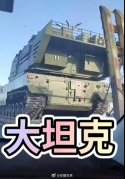The fact is that the front in the Russo-Ukranian conflict is relatively stagnant, and towed guns are used because neither side can secure concentration deep enough for mobile artillery to demonstrate its full potential. Drones thrive in this environment as artillery remains dispersed and can be picked off outside of air defense and jamming zones. Additionally, neither side has the industrial base to develop countermeasures to common drone tactics and deploy them with mass. The drones used in this conflict are low-capability to the point that they should be able to be targeted by cheap AAA before they penetrate to the rear. In regards to the use of drone guided or directed artillery, the toll on immobile towed artillery is likely to be quite high
Shaheds can be detected far in advance and shot down using gunfire. That is what Ukraine has been doing and it seems to be at least partially effective. Any military with a decent industrial base can probably do far better, approaching 100% interception at least around vulnerable locations should be well within possibility.Remember this is the price because Russia was desperate for drones.
As a comparison, note how the price of artillery shells in Europe has also jumped 4x from 2000euro to 8000euro.
Plus the Chinese price is going to be a lot lower.
So what is the cheapest SAM possible?
Yes, a hardened aircraft shelter will defend against small warheads.
But remember that Shaheeds are the low-end cruise missile used against soft, fixed targets. And there are thousands of such targets.
Then you have the DF-17 (~$2Mn) and the CJ-10 (~$1Mn) which are the high-end missiles which would be used against a hardened aircraft shelter (~$4 Mn)
Again, in a competition between low-cost offensive missiles and expensive defensive hardened shelters, the missiles win.
===
We have the CCTV7 newsreel on Youtube, where they take journalists to a factory capable of 1000 cruise missiles per day. This alone would be sufficient to deplete all the defensive SAMs.
That means China would have control of the medium and high altitude airspace, and could take out SPAAG, EW and lasers at its leisure.
You can boil it down to 2 scenarios.
1. If there aren't any air defences, the Shaheeds will target soft, fixed targets easily.
2. If there are still air defences, and a Shaheed is destroyed by a SAM, it will have done its job. The SAM costs a lot more than a Shaheed and those SAMs won't be available to shoot down aircraft or expensive cruise missiles.



